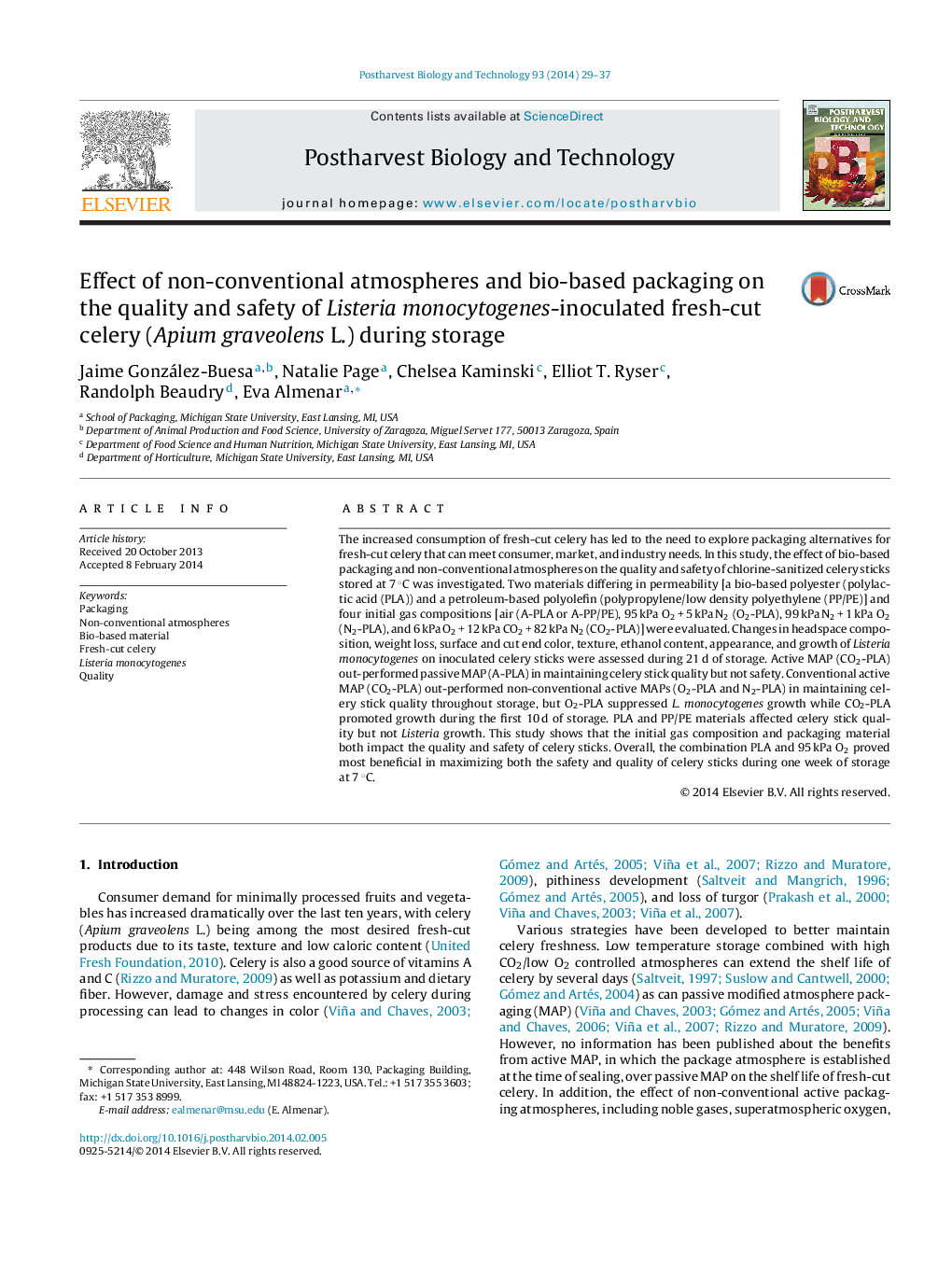| Article ID | Journal | Published Year | Pages | File Type |
|---|---|---|---|---|
| 4518293 | Postharvest Biology and Technology | 2014 | 9 Pages |
•Promoted Listeria growth in celery sticks packaged with CO2-rich atmosphere.•Suppressed Listeria growth in celery sticks packaged with O2-rich atmosphere.•95% O2 proved most beneficial maximizing safety and quality of celery sticks for 7 d.•Bio-based films made of polylactic acid were suitable for packaging celery sticks.•Good manufacturing practices for the fresh-cut produce industry.
The increased consumption of fresh-cut celery has led to the need to explore packaging alternatives for fresh-cut celery that can meet consumer, market, and industry needs. In this study, the effect of bio-based packaging and non-conventional atmospheres on the quality and safety of chlorine-sanitized celery sticks stored at 7 °C was investigated. Two materials differing in permeability [a bio-based polyester (polylactic acid (PLA)) and a petroleum-based polyolefin (polypropylene/low density polyethylene (PP/PE)] and four initial gas compositions [air (A-PLA or A-PP/PE), 95 kPa O2 + 5 kPa N2 (O2-PLA), 99 kPa N2 + 1 kPa O2 (N2-PLA), and 6 kPa O2 + 12 kPa CO2 + 82 kPa N2 (CO2-PLA)] were evaluated. Changes in headspace composition, weight loss, surface and cut end color, texture, ethanol content, appearance, and growth of Listeria monocytogenes on inoculated celery sticks were assessed during 21 d of storage. Active MAP (CO2-PLA) out-performed passive MAP (A-PLA) in maintaining celery stick quality but not safety. Conventional active MAP (CO2-PLA) out-performed non-conventional active MAPs (O2-PLA and N2-PLA) in maintaining celery stick quality throughout storage, but O2-PLA suppressed L. monocytogenes growth while CO2-PLA promoted growth during the first 10 d of storage. PLA and PP/PE materials affected celery stick quality but not Listeria growth. This study shows that the initial gas composition and packaging material both impact the quality and safety of celery sticks. Overall, the combination PLA and 95 kPa O2 proved most beneficial in maximizing both the safety and quality of celery sticks during one week of storage at 7 °C.
